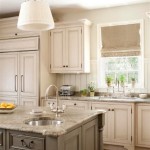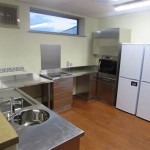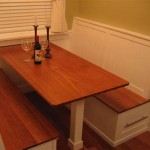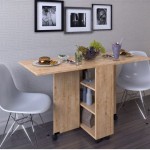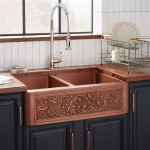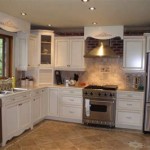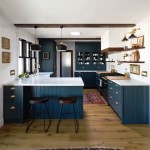The Benefits Of Adding An Accent Table To Your Kitchen Cabinet
The kitchen, often considered the heart of the home, is a dynamic space that serves multiple functions. It’s not only a place for food preparation and cooking, but also a gathering spot for family and friends. Optimizing the functionality and aesthetics of the kitchen requires careful consideration of various elements, from appliances and countertops to cabinetry and accessories. Among these, the accent table presents a unique opportunity to enhance the kitchen's utility and visual appeal. Introducing an accent table to complement existing kitchen cabinets can yield a multitude of benefits, significantly improving the overall kitchen experience.
While traditionally viewed as a living room or bedroom staple, the accent table is increasingly finding its place within the kitchen environment. Its versatility allows it to adapt to various kitchen layouts and design styles, offering a practical and stylish addition. The strategic placement of an accent table can resolve common kitchen challenges, such as limited counter space, inadequate storage, and a lack of decorative elements. Understanding the multifaceted advantages of incorporating an accent table can empower homeowners to make informed decisions about kitchen design and renovation.
Increased Counter Space and Food Preparation Area
One of the most compelling advantages of adding an accent table to the kitchen is the creation of additional counter space. Kitchens, especially in older homes or apartments, often suffer from insufficient surface area for food preparation. This can lead to cramped working conditions, inefficient workflow, and general frustration during meal preparation. An accent table provides a dedicated zone for chopping vegetables, assembling ingredients, or even plating dishes. By alleviating the pressure on existing countertops, the accent table promotes a more organized and streamlined cooking experience.
The size and shape of the accent table can be tailored to the specific needs of the kitchen. A larger, rectangular table can serve as a substantial island replacement or extension, providing ample surface area for complex cooking projects. A smaller, round table may be ideal for a compact kitchen, offering a convenient spot for quick tasks or holding ingredients. Furthermore, accent tables can be easily moved and repositioned, allowing for flexible use of space as needed. This adaptability is particularly valuable in kitchens that serve multiple functions, such as a dining area or home office.
The material of the accent table is also an important factor to consider. Durable and easy-to-clean surfaces, such as stainless steel, granite, or sealed wood, are well-suited for food preparation. These materials can withstand the rigors of a busy kitchen environment, resisting stains, scratches, and heat damage. The height of the accent table should also be carefully considered to ensure ergonomic comfort. A table that is too low or too high can lead to back pain and discomfort during prolonged use. Ideally, the accent table should be at the same height as existing countertops or slightly higher to provide a comfortable working surface.
Beyond its functional benefits, an accent table can also serve as a visual focal point within the kitchen. Choosing a table with a unique design or finish can add personality and character to the space. For example, a rustic wooden table can complement a farmhouse-style kitchen, while a sleek metal table can enhance a modern aesthetic. By carefully selecting the style and material of the accent table, homeowners can create a cohesive and visually appealing kitchen environment.
Enhanced Storage Solutions Beyond Kitchen Cabinets
Beyond providing extra counter space, an accent table can significantly enhance storage capacity within the kitchen. Many accent tables are designed with built-in shelves, drawers, or cabinets, offering valuable storage solutions for cookware, utensils, linens, or pantry items. This is especially beneficial in kitchens with limited cabinet space, allowing homeowners to maximize the efficiency of their storage options. By strategically utilizing the storage space within the accent table, clutter can be minimized, and essential items can be kept within easy reach.
Open shelving on an accent table provides an opportunity to display decorative items, such as cookbooks, plants, or decorative bowls. This can add visual interest to the kitchen and personalize the space. Closed cabinets or drawers, on the other hand, offer discreet storage for items that are best kept out of sight, such as cleaning supplies or infrequently used appliances. The combination of open and closed storage options allows for a balanced approach to organization and aesthetics.
The type of items stored within the accent table will influence the design and configuration of the storage space. If the accent table is intended for storing heavy pots and pans, sturdy shelves and reinforced construction are essential. If the accent table is intended for storing delicate glassware, soft liners and protective dividers can prevent damage. By carefully considering the storage needs of the kitchen, homeowners can select an accent table that provides optimal organization and protection for their belongings.
Accent tables with wheeled bases offer added flexibility in terms of storage and accessibility. These tables can be easily moved around the kitchen to different locations as needed. For example, a wheeled accent table can be used as a mobile bar cart during parties or as a temporary storage solution for large pots and pans during cooking. The mobility of the accent table allows homeowners to adapt their kitchen layout to suit their changing needs and preferences.
The addition of an accent table can also free up existing cabinet space, allowing for better organization of other items. By relocating seldom-used items to the accent table, homeowners can create more room for frequently used items in their main cabinets. This can improve the overall efficiency of the kitchen and make it easier to find what you need when you need it.
Aesthetic Enhancement and Focal Point Creation
Beyond its practical benefits, an accent table can significantly enhance the aesthetic appeal of the kitchen. It can serve as a focal point, drawing the eye and adding visual interest to the space. The choice of material, finish, and design of the accent table can complement or contrast with existing kitchen cabinets and décor, creating a unique and personalized look. By carefully selecting an accent table that aligns with the overall design style of the kitchen, homeowners can elevate the ambiance and create a more inviting and visually appealing space.
An accent table can introduce a pop of color or texture to a neutral kitchen. A brightly colored table can add vibrancy and energy, while a table with a unique texture can add depth and dimension. The use of contrasting materials, such as wood and metal, can also create visual interest and prevent the kitchen from feeling monotonous. The accent table provides an opportunity to experiment with different design elements and express personal style.
The placement of the accent table can also influence its aesthetic impact. A strategically placed table can balance the visual weight of the kitchen, creating a sense of harmony and symmetry. For example, if the kitchen has a dominant feature on one side, such as a large island or a bank of cabinets, placing an accent table on the opposite side can help to balance the overall composition. The accent table can also be used to define different zones within the kitchen, such as a food preparation area or a dining area.
Accessorizing the accent table can further enhance its aesthetic appeal. Displaying decorative items, such as plants, artwork, or collectibles, can add personality and character to the space. The choice of accessories should complement the overall design style of the kitchen and reflect the homeowner's personal taste. A well-accessorized accent table can serve as a conversation starter and a focal point for the room.
Lighting can play a crucial role in highlighting the accent table and enhancing its aesthetic impact. A pendant light or a spotlight can be used to illuminate the table, drawing attention to its unique features and creating a warm and inviting ambiance. The type of lighting chosen should complement the style of the accent table and the overall design of the kitchen. By carefully considering the lighting scheme, homeowners can create a visually stunning and welcoming kitchen environment.
The addition of an accent table to the kitchen cabinet system is not merely about adding another piece of furniture; it is about transforming the kitchen into a more functional, organized, and aesthetically pleasing space. Whether it's utilized for expanding food preparation areas, providing supplemental storage, or simply serving as a design element to enhance the overall look and feel of the kitchen, the benefits of incorporating an accent table are significant and far-reaching.

Top 25 Decorating Ideas For Oak Cabinet Kitchens August 2025

3 Ways To Use A Kitchen Island Custom Home Group

Decorating Ideas For Above Kitchen Cabinets August2025

25 Small House Kitchen Design Ideas How Do I Lx Hausys

The Kitchen Island Vs Table

How To Style Glass Kitchen Cabinets Sanctuary Home Decor

15 Kitchen Upgrades To Increase The Value Of Your Home

8 Kitchen Cabinet Alternatives Unique Storage With Style

Behind The Couch Table Ideas For Your Living Room Stefana Silber

How To Update A Classic White Kitchen Stefana Silber
Related Posts

